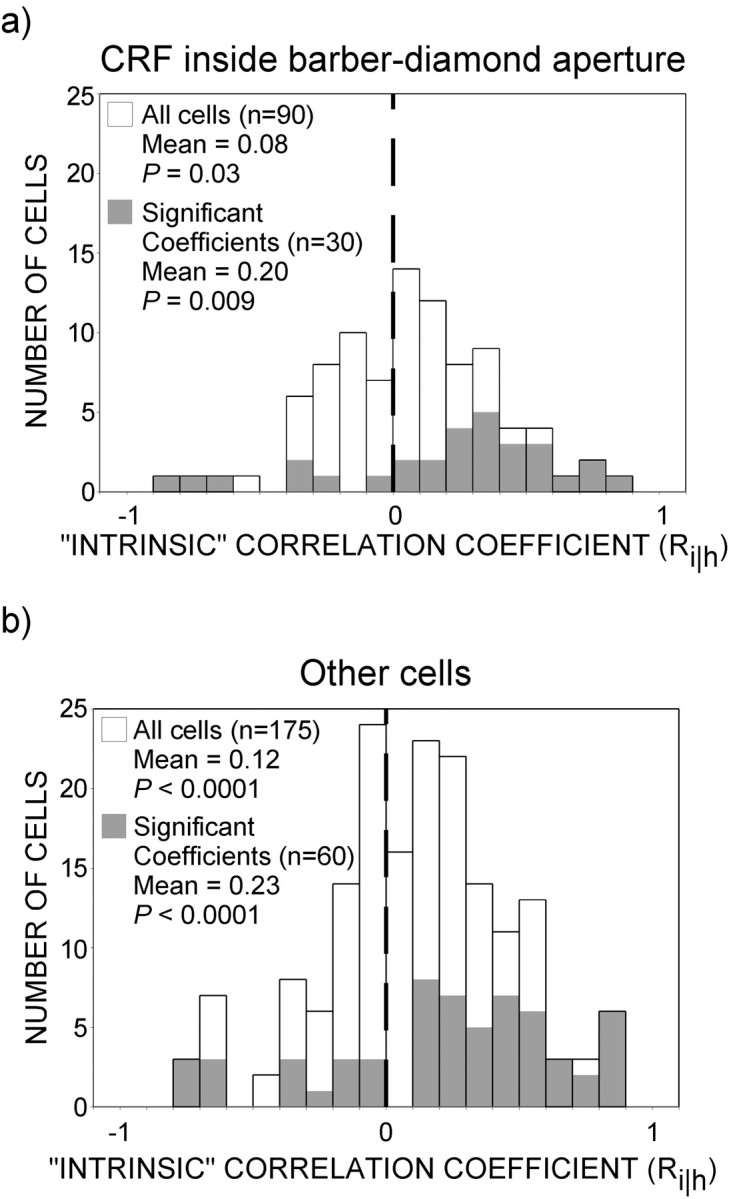Fig. 12.

The nonclassical receptive field mediates contextual effects. We sought to determine whether the influence of depth ordering on the responses of MT neurons could be governed solely by the nonclassical receptive field. The responses of cells whose CRFs lay within the diamond-shaped aperture of the stimulus were compared with cells whose CRFs may have extended beyond the stimulus aperture. Plotting conventions are the same as for Figure 8.a, CRF inside barber-diamond aperture. Mean coefficient (Ri‖h) for the population of 90 cells (0.08) was significantly greater than zero (t test;p = 0.03), and the number of positive (n = 55) coefficients was greater than the number of negative (n = 35) coefficients (χ2; p = 0.04). The mean (Ri‖h) for the distribution of individually significant coefficients (0.20) was also greater than zero (t test;p = 0.009), and there were more positive (n = 23) than negative coefficients (n = 7) as well (χ2;p = 0.003). b, Other cells. Mean of the distribution of coefficients for these 175 cells was positive (0.12; t test; p < 0.0001), and positive coefficients (n = 111) outnumbered negative (n = 64) ones (t test;p = 0.004). Mean for the distribution for significant cells was also positive (0.23; t test;p < 0.0001), and positive coefficients (n = 44) outnumbered negative (n = 16) coefficients (t test;p = 0.0003). More importantly, there was no difference between the populations of coefficients when the CRF was inside versus outside the barber-diamond aperture (ttest; p = 0.20). There was also no difference between the distributions of significant cells when the CRF was inside or beyond the aperture (t test; p = 0.75). Hence, depth-ordering information restricted to the nonclassical receptive field can alter directional responses to moving features within the CRF.
